Children’s Health Info
Ear Infections
Children's Ear Infections Soar Despite Medical 'Treatment'
Health Watch, May 1997 - Review
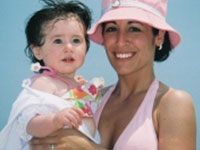 Between 1981 and 1988 there was a 44% increase in the number of preschooler ear infection cases in the United States. In 1988 the figure had reached 5.9 million, and by 1990 ear infections were the diagnosis arrived at by medical doctors the second most frequently. Potentially resulting in hearing loss, many believe that the medical community needs a new approach to treatment for ear infections. The Ladies Home Journal expresses this view: "'A child's ear infection offers a classic example of how over-treatment with antibiotics can lead to the development of drug-resistant strains of bacteria. For years, amoxicillin - a penicillin-like antibiotic - was the standard treatment for acute otitis media. However, these infections usually clear, without treatment, in two or three days...Because amoxicillin has been so over prescribed, some ear infections that in the past might have responded to it no longer do. As a result, doctors are forced to prescribe one after another of stronger - and more expensive - medications. Furthermore, the stronger antibiotics are the broad-spectrum ones, which kill the so-called good bacteria as as well as the bad, making children vulnerable to secondary infections.'"
Between 1981 and 1988 there was a 44% increase in the number of preschooler ear infection cases in the United States. In 1988 the figure had reached 5.9 million, and by 1990 ear infections were the diagnosis arrived at by medical doctors the second most frequently. Potentially resulting in hearing loss, many believe that the medical community needs a new approach to treatment for ear infections. The Ladies Home Journal expresses this view: "'A child's ear infection offers a classic example of how over-treatment with antibiotics can lead to the development of drug-resistant strains of bacteria. For years, amoxicillin - a penicillin-like antibiotic - was the standard treatment for acute otitis media. However, these infections usually clear, without treatment, in two or three days...Because amoxicillin has been so over prescribed, some ear infections that in the past might have responded to it no longer do. As a result, doctors are forced to prescribe one after another of stronger - and more expensive - medications. Furthermore, the stronger antibiotics are the broad-spectrum ones, which kill the so-called good bacteria as as well as the bad, making children vulnerable to secondary infections.'"
Dr. Lehnert concluded form his study on the role of antibiotic therapy in cases of Otitis Media that antibiotics really only need to be administered in 5 to 10 percent of cases. Another available and overly popular treatment is the insertion of tympanotomy tubes into the ear. Though this procedure was used over 670,000 times in 1988, there is evidence that 25% of them should not have been performed, especially not when you consider the hearing loss and permanent scarring that may result from the procedure (which has not been found more effective than medicine or other therapy).
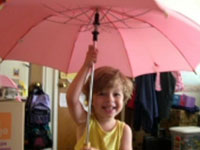 So what are parents doing in light of all this? They are focusing on Natural Health Care, on behavior modification, and on diet to help their children use their own bodies and body resources to stay well.
So what are parents doing in light of all this? They are focusing on Natural Health Care, on behavior modification, and on diet to help their children use their own bodies and body resources to stay well.
Vaccines
What are the risks of vaccines?
Dr. Robert Mendelsohnnn is author of Confessions of a Medical Heretic and past head of the Illinois State Board of Licensing for physicians. In the newsletter The People’s Doctor, Vol.2. No. 4, be wrote:
" With some immunizations, the risk of taking the shots may outweigh their benefits. In 1976, while addressing science writers at a seminar of the American Cancer Society, Dr. Arobert Simpson of Rutgers University pointed out that "immunization programs against the flu, measles, mumps, polio, etc. actually may be seeding humans with RNA to from pro-viruses which will then become latent cells throughout the body Some of these latent pro-viruses could cause a variety of diseases including rheumatoid arthritis, multiple sclerosis, lupus erythematosus, Parkinson’s disease and perhaps cancer."
 Smallpox: The U.S. finally has abandoned smallpox immunization because the risk of serious complications, leading to death in one per million vaccinations, was higher from the vaccine that from the risk of smallpox itself. The risks of a person being hospitalized with encephalitis or with conditions known as eczema vaccinatum and progressive vaccinia were about 10 per million vaccinations.
Smallpox: The U.S. finally has abandoned smallpox immunization because the risk of serious complications, leading to death in one per million vaccinations, was higher from the vaccine that from the risk of smallpox itself. The risks of a person being hospitalized with encephalitis or with conditions known as eczema vaccinatum and progressive vaccinia were about 10 per million vaccinations.
Diphtheria: This form of immunization often is of questionable value. For example, during a 1969 outbreak of diphtheria in Chicago, four of the 16 victims (according to a Chicago Board of Health Report) had been fully immunized against the disease, and five others had received one or more doses of the vaccine. In another report of three fatal diphtheria cases, one individual who dies and 14 of the 23 carriers had been fully immunized.
Whopping Cough: Whopping cough (pertussis) vaccine is hotly debated, both because of its effectiveness rate is only about 50% and because it may cause high fevers and convulsions as well as encephalopathy (brain damage). This vaccine is regarded as so dangerous that most public health authorities prohibit its use after age six. Meanwhile, whooping cough itself has almost completely disappeared (less than 1000 reported cases in 1976).
Measles: Contrary to popular belief, measles cannot cause blindness; it can cause a condition known as phtotophbia which parents years ago treated by simply pulling down the window shades.
Measles vaccine is designed primarily to prevent measles encephalitis, which is said to occur in one out of 1000 cases of measles. Any of us who had decades of experience with measles must question this statistic: the incidence of 1/1000 may be accurate for children who live in conditions of poverty and malnutrition, but if one excluded simple sleepiness from the measles itself, the incidence of true encephalitis probably is more like 1/10,000 or 1/100,0000.
Meanwhile, the vaccine itself is associated with encephalopathy in one per million and with a series of other complications such as SSPE (subacute sclerosing panencephaliitis). Other neurological and sometimes fatal conditions associated with the measles vaccine include ataxia, retardation, learning disability or hyperactivity, aseptic meningitis, seizure disorders and hemiparesis. I wonder whether the current epidemic of hyperactivity in children may have its origin, at least in part, in the measles vaccines
Mandated Childhood Vaccines
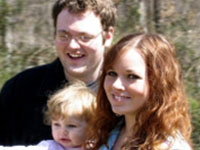 Today, when parents take their child to a doctor’s office, they are facing a difficult and sometimes terrifying decision about whether or not to vaccinate their healthy child. Vaccines are supposed to protect against one or more of the seven contagious childhood diseases. As parents become more educated about the risks and benefits of disease and vaccines, they realize the decision is not easy.
Today, when parents take their child to a doctor’s office, they are facing a difficult and sometimes terrifying decision about whether or not to vaccinate their healthy child. Vaccines are supposed to protect against one or more of the seven contagious childhood diseases. As parents become more educated about the risks and benefits of disease and vaccines, they realize the decision is not easy.
The American Medical Association (AMA) and the American Academy of Pediatric (AAP) consider serious adverse vaccine events to be rare. If a reaction does occur in a healthy child, many doctors suggest the event was due to an underlying condition within the child and not as a reaction to the vaccine or combination of vaccines. Parents must become educated and make an informed decision. Immunizations are very serious.
Some health professionals warn parents about a slight fever and crankiness, but not prolonged high pitch screaming, excessive sleepiness, seizure activity, shock collapse, etc. that can cause permanent damage and death. These latter conditions are a sample of acknowledged vaccine reactions in The National Vaccine Injury Act of 1986, PL 99-660. Under some circumstances, adults may also be required to receive immunizations. Adverse reactions have been reported and confirmed, but little study has been dome and the true extent of adult vaccine reactions is uncertain.
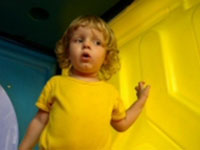 As parents become educated, they realize there are specific contraindications in which a child should not receive a particular vaccine at all, and this could help prevent the child from becoming a vaccine injury statistic. Before entering their health care professional’s office, a parent should prepare the facts for discussion and ask the doctor, "What is the most serious thing I should be aware of that can happen to my child from this shot?". A full family medical history should be taken my the doctor, and if a parent does decide to vaccinate at that time, their child should be healthy. Consideration should be given to only administering one shot at a time.
As parents become educated, they realize there are specific contraindications in which a child should not receive a particular vaccine at all, and this could help prevent the child from becoming a vaccine injury statistic. Before entering their health care professional’s office, a parent should prepare the facts for discussion and ask the doctor, "What is the most serious thing I should be aware of that can happen to my child from this shot?". A full family medical history should be taken my the doctor, and if a parent does decide to vaccinate at that time, their child should be healthy. Consideration should be given to only administering one shot at a time.
The most complete source about warnings, side effects, and vaccine schedules (which vaccines should be given when and it what combination) is the package insert for each vaccine. This information is compiled by the manufacturer under the supervision of the Food and Drug Administration (FDA). The same information is available in the Physicians Desk Reference (PDR), universally available in libraries, doctor’s offices and pharmacies. Be sure to compare any other information you might be given about vaccines to this reference.
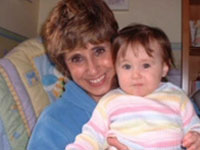 Depending on which shot is given, reactions may begin immediately or up to several weeks or months later. Parents should observe their child closely for any unusual behavior or reaction during this time period. If a reaction is suspected, keep a diary of observations and contacts with your doctor. Parents should insist their doctor or hospital emergency room see their child and help their child if they have concerns. In addition, make sure the doctor enters the vaccine manufacturer and lot number in the child’s permanent medical record and the event is reported to the Centers for Disease.
Depending on which shot is given, reactions may begin immediately or up to several weeks or months later. Parents should observe their child closely for any unusual behavior or reaction during this time period. If a reaction is suspected, keep a diary of observations and contacts with your doctor. Parents should insist their doctor or hospital emergency room see their child and help their child if they have concerns. In addition, make sure the doctor enters the vaccine manufacturer and lot number in the child’s permanent medical record and the event is reported to the Centers for Disease.
DPT (diphtheria, pertussis (whooping cough ) tetanus), MMR ( measles, mumps and rubella (German Measles)), and polio are vaccines mandated in many states and covered under PL 99-660 in a no-fault compensation system. The pertussis (whooping cough) vaccine has been the most controversial of all vaccines and the majority of awards in the compensation system have been for pertussis vaccine injury and death. IF a parent feels a child has been permanently injured or died from a vaccine, there must be proof the child was damaged by the vaccine and not from a pre-existing condition in order to receive compensation. HIB is not a vaccine included in the compensation system.
States which do not require vaccination against pertussis for pre-requisite to school entry include AZ, MO, OR, PA, RI, WA, TX and ID. All fifty states require diphtheria, measles, rubella, and polio vaccination. All states except AZ, MO and NY require tetanus vaccination and all states except AK, AZ, AR, IA, KY, MD, MO, NM, SC, VT and WV require mumps vaccination. All states except MS and WV allow a religious exemption to vaccination. Philosophical objection too vaccination is allowed in AZ, CA, CO, ID, IN, LA, ME, MI, MN, MO, NE, ND, OH, OK, PA, RI, UT, VT, WA, and WI.
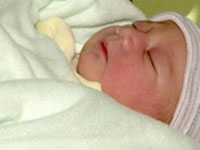 A Shot in the Dark by Harris Coulter and Barbara Loe Ficsher, is an excellent source of information about the pertussis vaccine. This book, now in its second edition, is available through the NVIC/DPT. The NVIC/DPT also offers a wide range of educational materials, including copies of the PDR free for members upon request and the NVIC/DPT Resource List for further study. Whooping Cough, the DPT Vaccine and Reducing Vaccine Reactions is available for $5 and A Shot in the Dark is available for $13 (VA residents add 45 cents state tax).
A Shot in the Dark by Harris Coulter and Barbara Loe Ficsher, is an excellent source of information about the pertussis vaccine. This book, now in its second edition, is available through the NVIC/DPT. The NVIC/DPT also offers a wide range of educational materials, including copies of the PDR free for members upon request and the NVIC/DPT Resource List for further study. Whooping Cough, the DPT Vaccine and Reducing Vaccine Reactions is available for $5 and A Shot in the Dark is available for $13 (VA residents add 45 cents state tax).
Although most children do not suffer serious problems from the vaccinations, when it happens to your child, the risks are 100%.
Dr. Lehnert concluded form his study on the role of antibiotic therapy in cases of Otitis Media that antibiotics really only need to be administered in 5 to 10 percent of cases. Another available and overly popular treatment is the insertion of tympanotomy tubes into the ear. Though this procedure was used over 670,000 times in 1988, there is evidence that 25% of them should not have been performed, especially not when you consider the hearing loss and permanent scarring that may result from the procedure (which has not been found more effective than medicine or other therapy).
So what are parents doing in light of all this? They are focusing on Natural Health Care, on behavior modification, and on diet to help their children use their own bodies and body resources to stay well.
Antibiotics
Survey Shows Link between Antibiotics and Developmental Delays in Children
International Chiropractic Pediatric Association Newsletter July 1996
 A new nationwide survey of nearly 700 children is showing a disturbing link between children with developmental delays and the amount of antibiotics they have taken,
A new nationwide survey of nearly 700 children is showing a disturbing link between children with developmental delays and the amount of antibiotics they have taken,
The survey, which included youngsters between the ages of one year an 12 years found that those who have taken more than 20 cycles of antibiotics in their lifetime are over 50% more likely to suffer developmental delays. Children who have had three of fewer rounds of antibiotics were half as likely to become developmentally delayed.
The 9 month survey began in June 1994 by the Developmental delay Registry, a multi-national database of 800 families, most of whom who have children with developmental delays.
The survey's other findings:
- Nearly 75% of the delayed children were reported to be developing normally in their first year of life
- Developmentally delayed children were 37% more likely to have had 3 or more ear infections than unaffected children
- Affected children were nearly four times as likely to have had negative reactions to immunizations
- Affected children were twice as likely to have had ear tubes than unaffected children
 Kelly Dorfman, a licensed nutritionist and co-founder of the Developmental Delay Registry cautions, "Parents should be put on notice that utilizing antibiotics prophylactically could jeopardize their children's development. We believe alternative approaches to treating ear infections should be considered."
Kelly Dorfman, a licensed nutritionist and co-founder of the Developmental Delay Registry cautions, "Parents should be put on notice that utilizing antibiotics prophylactically could jeopardize their children's development. We believe alternative approaches to treating ear infections should be considered."
The incidence of children in the United States with developmental, behavioral, and mental disorders is dramatically increasing. Conservative estimates show that in the last four years the number of children under the age of 18 with these disorders has grown from 4.8 million to 7.5 million. Included in these pervasive developmental disorders are autism, speech and language problems and multi-system developmental disorders. Symptoms range from skin irritations and sleep disorders to repetitive behavior and loss of language.
The ICPA for a number of years has talked about the abuse of antibiotics. This is another study which verifies our concerns.
A majority of the above article was reprinted from the publications of the Developmental Delay Registry.
Overuse of Antibiotics A Real Threat
By Doug Levy
USA TODAY 4/28/94
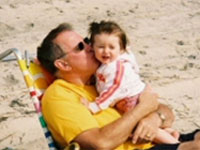 "Crazy" overuse of antibiotics is one reason drug-resistant diseases such as TB, staph and pneumonia is on the rise, say experts in today's New England Journal of Medicine.
"Crazy" overuse of antibiotics is one reason drug-resistant diseases such as TB, staph and pneumonia is on the rise, say experts in today's New England Journal of Medicine.
Taking antibiotics "is not like taking an aspirin", says lead author Alexander Tomasz, Rockefeller University microbiology professor.
"There's vast overuse", he says, "It's completely crazy."
Among germs resisting conventional treatments:
Streptococcus pneumonia, which causes pneumonia, meningitis, otitis media and about 40,000 deaths a year.
Staphylococcus aureus, and Enterococcus faecium, leading causes of in-hospital infections; drug-resistant strains now account for about 1 million infections a year.
Drug-resistant Mycobacterium tuberculosis has surfaced in 35 states since 1985.
Another problem: use of antibiotics in the food chain - to stop diseases among cattle, fish or other animals - enables germs to build resistance.
Though it may keep both animals and humans from getting sick now, it raises the risk that bacteria will develop antibiotic-resistant genes, says Tomasz.
Over time," the resistant gene shows up where it can cause trouble," he says.
 The experts call for:
The experts call for:
- Better infection control in hospitals
- Increased monitoring
- More Research toward new medications
But "hand in hand with meticulous infection control must go reductions in the inappropriate use of antibiotics," says Dr. Barbara Murray, University of Texas Medical School.
Worldwide health implications of the problem are the topic at a meeting this week in Prague, the Czech Republic.
Over the Counter Drugs
Parents give Kids useless, risky drugs
By Tim Friend
USA TODAY 10/5/94
 Parents often give over-the-counter drugs to preschool children to treat colds, despite the potential for harm and little proof that the drugs are effective.
Parents often give over-the-counter drugs to preschool children to treat colds, despite the potential for harm and little proof that the drugs are effective.
A survey of 8,145 mothers of 3-year olds found 53.7% of the kids had been given an OTC drug in the previous 30 days, mostly cold medicine and Tylenol, says Michael Kogan of the National Center for Health Statistics. In today's Journal of the American Medical Association:
70% of children with a recent illness got OTC drugs
Half of kids had been given two types of drugs
White, married, educated mothers with good incomes were most likely to give drugs
FDA's Dr. Michael Weintraub says side effects are generally not serious, but there is potential for adverse reactions and over sedation.
 Parents feel the need to do something for a sick child and in the process "become easy prey to......promotion by drug companies'" says Dr. Anne Gadomski of the University of Maryland, in an editorial in the same issue.
Parents feel the need to do something for a sick child and in the process "become easy prey to......promotion by drug companies'" says Dr. Anne Gadomski of the University of Maryland, in an editorial in the same issue.
From 1985-89, 670,000 reports were made to poison control centers involving over-the-counter drugs and children under age 6.
The truth, she says, is preschool kids experience 4 to 8 upper respiratory tract infections a year that are caused by viruses, and there is no cure for these infections. They commonly go away by themselves in 5 to 7 days.
Attention Deficit Disorder
The Dangers of Ritalin
by Linda Rhodes
International Chiropractic Pediatric Association Newsletter September 1993
Do you know a child who is easily distracted by outside stimuli? What about a c child who blurts out answers to unfinished questions or talks excessively? How about one that fidgets or squirms in his seat? If so, that child may be diagnosed as having Attention Deficit Disorder (ADHD) and be prescribed a dangerous drug called Ritalin.
ADHD is a so-called "illness" described in the Diagnosis and Statistical Manula of Mental Disorders 111-R (DSM 111-R) , the handbook of psychiatry. The "symptoms" described in the DSM-111-R include common forms of childhood activities such as those described above, failing o finish chores, and difficulty waiting turns in games (APA 1987). Ritalin, an amphetamine or "speed-lie" drug, is prescribed to "treat" ADHD in children and adults. However, when this drug is prescribed most of the data given to parents about Ritalin is not true. Statements like "Ritalin has no side effects", "Ritalin is not at all addictive", and "Ritalin will help improve your child's performance in school" simply are not true. Ritalin has many dangerous side effects and withdrawal symptoms, it is a highly addictive substance often accompanied by crime, and, statistically, has not been shown to improve the literacy of schoolchildren.
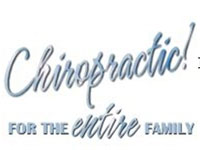 The manufacturer of Ritalin, CIBA-GEIGY, warns that the drug must not be used on children under the age of six. The long term effects of Ritalin have not been established and the mechanism of how Ritalin have not been established and the mechanism of how Ritalin works in the body is not understood. There are also many other warnings that should be known about the side effects of Ritalin. Among these are stunting growth, depression, insomnia, nervousness, skin rash, anorexia, nausea, dizziness, headache, abdominal pain, blood pressure, and pulse change, and development of Tourette's syndrome. Tourette's syndrome is a permanent and irreversible condition characterized by body ticks, spasms, barking sounds, and screaming obscenities. Chronic usage of Ritalin is also known to produce psychosis
The manufacturer of Ritalin, CIBA-GEIGY, warns that the drug must not be used on children under the age of six. The long term effects of Ritalin have not been established and the mechanism of how Ritalin have not been established and the mechanism of how Ritalin works in the body is not understood. There are also many other warnings that should be known about the side effects of Ritalin. Among these are stunting growth, depression, insomnia, nervousness, skin rash, anorexia, nausea, dizziness, headache, abdominal pain, blood pressure, and pulse change, and development of Tourette's syndrome. Tourette's syndrome is a permanent and irreversible condition characterized by body ticks, spasms, barking sounds, and screaming obscenities. Chronic usage of Ritalin is also known to produce psychosis
In addition to dangerous side effects and withdrawal symptoms, Ritalin is an extremely addictive substance. Under Federal and Georgia laws, Ritalin is classified as a Schedule 11 Controlled Substance. This rating of Schedule 11 is given to prescription drugs which have the greatest abuse and dependence potential. Other drugs which share this category with Ritalin are morphine, opium, methadone and cocaine. In fact, the DSM-111-R states that "the patterns of use, associated features, and course of Amphetamine Dependence and Abuse are very similar to those of Cocaine Dependence and Abuse." The DSM-111-R goes on to state that experience users of amphetamines and cocaine are unable to distinguish between the two substances. The DSM-111-R continues, "One of the few differences between the two classes of substances is that the psychoactive effects of the amphetamine last longer." Psychiatrists as well as the United States government recognize that Ritalin is an extremely addictive substance, although this is a fact rarely known by parents or users of Ritalin. In a 1988 article titled "Rx Drug Abusers Targeted", the Akron Beacon Journal stated that Ritalin accounted for 80% of drug prescription abuse cases in that area. Reports by law officers in numerous cities across Canada recognized that Ritalin was responsible for more street crime than any other drug in a 1987 article in the Western Report. The article also noted that Ritalin was the street drug of choice all across Canada (Whyte, Gallagher, etc. 1987).
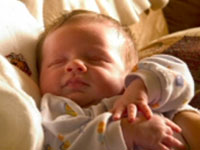 One would think that despite all the harmful side effects, withdrawal symptoms and addictive effects Ritalin would, in fact, help children to perform better in school. However, this has not shown to be true. Despite the drastic increase in Ritalin administration to schoolchildren since its introduction, SAT scores in the United States have dropped rather than increased over the past thirty years. Since 1963, SAT scores steadily declined for sixteen straight years, finally leveling off in the range of 890-900. The former average SAT score in 1963 was a 980 (Citizens Commission on Human Rights, 1993). Ritalin, which is currently administered to thousands of schoolchildren, supposedly improves he performance of schoolchildren. However, the decline of SAT scores and study upon study demonstrate the opposite.
One would think that despite all the harmful side effects, withdrawal symptoms and addictive effects Ritalin would, in fact, help children to perform better in school. However, this has not shown to be true. Despite the drastic increase in Ritalin administration to schoolchildren since its introduction, SAT scores in the United States have dropped rather than increased over the past thirty years. Since 1963, SAT scores steadily declined for sixteen straight years, finally leveling off in the range of 890-900. The former average SAT score in 1963 was a 980 (Citizens Commission on Human Rights, 1993). Ritalin, which is currently administered to thousands of schoolchildren, supposedly improves he performance of schoolchildren. However, the decline of SAT scores and study upon study demonstrate the opposite.
No child deserves to be drugged in order to make them conform to someone else's idea of what it is to be "good"; to sit still, to await his/her turn in games, etc. No child deserves to be placed on a drug with such dangerous side effects as Tourette's syndrome and withdrawal symptoms of paranoia and suicide. There are alternatives to the behavior modifying drugging which is occurring to children all across this country. Many successful non-medicinal alternatives to Ritalin exist today. For further information on Ritalin or alternative solutions for handling children diagnosed with ADHD, contact the Citizens Commission on Human Rights at one of the following addresses: 6362 Hollywood Blvd. Suite b, Los Angeles, CA 90028; 1-800-869-CCHR or P.O. Box 1561, Snellville, GA 30278 1-404-518-8868.
Pregnancy
Chiropractic in the 9th Month of Pregnancy
The 9th Month. William Sears, MD, Martha Sears, RN. Parenting, June/July 1997.
"As your baby descends into your pelvic cavity, you may feel sharp, stabbing pains at the base of your spine or in the middle of your pelvic bone, making it uncomfortable twinges of "pains and needles" in the cervix itself. Pain may radiate down your back or thighs. The increased pelvic aches and pains are likely due to the relaxation and stretching of your pelvic ligaments in preparation for labor. You can ease these discomforts by changing positions. Exercise gently each day; take long, slow walks or ride a stationary bike. If you cannot exercise without pain, consult your doctor. He or she may be able to recommend a chiropractor experienced in working on pregnant bodies, who may be able to give you some gentle pelvic adjustments to get your hips back in the balance. It is our personal theory that chiropractic care in pregnancy can held to avoid or relive back pain and also prepare your back and pelvic structures for the stresses of labor and delivery.
The 9th Month. William Sears, MD, Martha Sears, RN. Parenting, June/July 1997.
Caesarean Under Fire
Researchers report that half of all C-section deliveries needlessly risk the mother’s life or health without benefit to the baby.
 Today the C-section rate averages one in four births, and at some hospitals the C-section rate is above 50 percent. Studies indicate that the babies fare just as well in areas where the rate is below 20 percent as they do in areas where the rate is higher.
Today the C-section rate averages one in four births, and at some hospitals the C-section rate is above 50 percent. Studies indicate that the babies fare just as well in areas where the rate is below 20 percent as they do in areas where the rate is higher.
An analysis published in the Journal Obstetrics and Gynecology revealed that 36 percent of C-sections are now done because the woman had a previous caesarean. As many as 95 percent of the women who have had a C-section and are having another child have a second C-section, despite studies that have shown at least half could safely deliver vaginally.
C-section is major surgery that places the mother at 2-4 times the risk of dying in childbirth than if she delivers vaginally. Most likely complications included infection (which occurs in 40-70 percent of C-sections), hemorrhage, blood clots, and injury to the bladder or intestines. The baby can also be endangered by a C-section scheduled in advance of labor because mistakes are commonly made about the due date, which often results in the delivery of a premature baby. Preliminary studies also suggest that babies delivered by C-section may miss the action of certain hormones and other substances released during labor that help prepare the baby for life outside the womb.
For the optimum delivery it is wise for the expectant mother to be under Chiropractic care during the pregnancy. This allows the structures to be in alignment so that the baby can be delivered naturally.
Is an Epidural Bad for a Newborn?
Parenting Magazine, August 1997
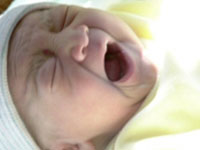 An epidural can turn a terrible labor into a tolerable one. Yet a new study suggests this procedure (numbing the area from the waist down enough to alleviate pain but not interfere with pushing) may not be without drawbacks. It’s not that epidurals harm the baby but simply that some women who have them develop a fever during delivery, which signals that their newborns may be ill. After undergoing `testing and treatment, however, the majority of such infants turn out to be infection free.
An epidural can turn a terrible labor into a tolerable one. Yet a new study suggests this procedure (numbing the area from the waist down enough to alleviate pain but not interfere with pushing) may not be without drawbacks. It’s not that epidurals harm the baby but simply that some women who have them develop a fever during delivery, which signals that their newborns may be ill. After undergoing `testing and treatment, however, the majority of such infants turn out to be infection free.
Researchers at Boston’s Brigham ad Women’s Hospital studied the medical records of more than 1,600 women who had uncomplicated, normal childbirths. Among the findings: 15 percent of those who had epidurals developed a fever, raising a red flag about their infants’ health; only 1 percent of new moms who had other forms of pain relief or none at all had fevers.
Newborns with infections rarely develop obvious symptoms (such as a temperature rise), so maternal fever is one of the few signs that a newborn may be ill. And an infection that’s harmless to a new mom, if untreated, can be fatal to her newborn. Some doctors, erring on the side of caution, draw blood from these babies for testing and give them shots of antibiotics, which often prolongs their hospital stay up to three days -–only to find that most are perfectly healthy. In the study, 86 percent of the babies who were tested for infection and 87 percent of those who received antibiotics were born to moms who had epidurals. But of those tested less than 1 percent were actually ill.
This puts expectant moms in a quandary; whether to go for the Epidural or to pass on the one pain alleviator that will allow them to experience the ecstasy of childbirth without the agony. Experts caution against forgoing a n epidural solely for this reason, however, because a new mom’s temperature may rise even without it. "if a woman labors in a heated birthing room for many hours, the physical effort alone may result in a slight fever," "says David Birnbach, M.D., director of obstetric anesthesiology at St. Luke’s – Roosevelt Hospital in New York.
Besides, experts agree that epidurals are the best labor-pain relief available. So that expectant women won’t have to factor in the possibility of a fever when considering an epidural, researchers hope to find ways other that a mother’s temperature to determine whether a newborn has an infection.
Meanwhile, if you’re expecting, your doctor should go over all the pros and cons of having an epidural so that when the time comes you’ll be prepared to make the choice that is best for you.
Chiropractics for Kids
The TAB, May 19, 1992 - A Review
 Mistakenly believed to be merely "'back doctors'" for adults, chiropractors have always realized the benefit children receive from chiropractic care. The spine is the container for the entire nervous system, the system that controls functioning for the entire body. Any obstacles (called vertebral subluxations) to a free flow of energy along those nerves would interrupt normal, healthy, body function.
Mistakenly believed to be merely "'back doctors'" for adults, chiropractors have always realized the benefit children receive from chiropractic care. The spine is the container for the entire nervous system, the system that controls functioning for the entire body. Any obstacles (called vertebral subluxations) to a free flow of energy along those nerves would interrupt normal, healthy, body function.
Though chiropractic does not treat specific symptoms, the improved immune system function that results in Children is effective against ear infections, allergies, asthma, and bed-wetting that emerged when a subluxation interrupted communication between the brain and the body .
These pediatric chiropractors are trained to adjust children, even shortly after birth, such that it may take only one, two, or three adjustments to remove subluxations and dramatically affect the future Health of the child.
Is there more information about Pediatric Chiropractic Care?
For more information, please visit the International Chiropractic Pediatric Association.